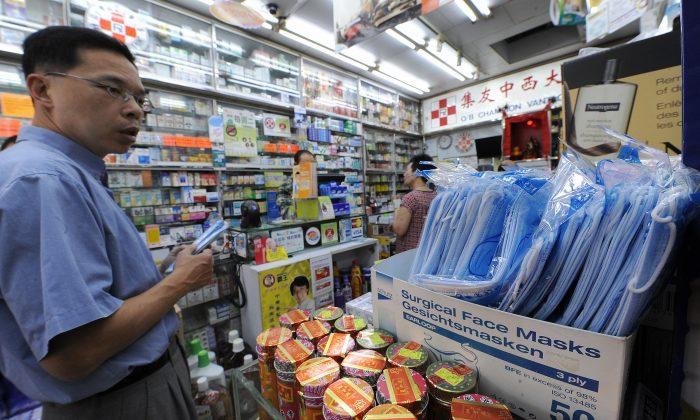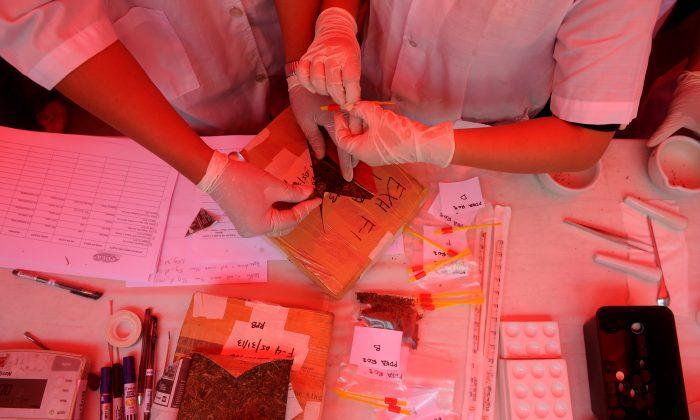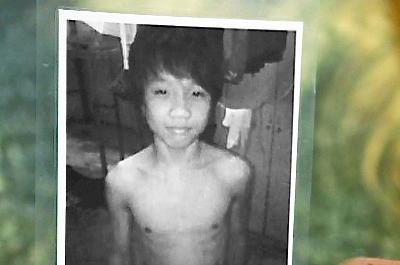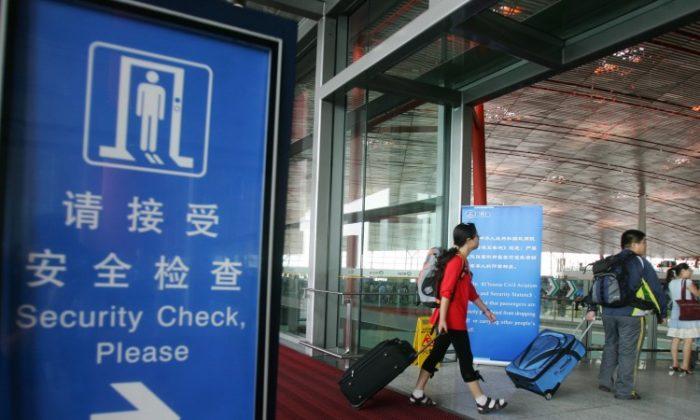[xtypo_dropcap]C[/xtypo_dropcap]hinese Internet users, or netizens, have inverted the Chinese Communist Party’s recent foreign propaganda campaign to create their own “folk version” of the National Image advertisement.
The official commercial is being screened on Times Square and in major Western media, but while it shows smiling faces and glitzy scenery introducing modern China to the world, the folk version is much more dour: in place of young female models striking poses, there are contorted limbs of people crushed under trucks, aggressive Communist Party officials making obscene gestures, and a man setting himself on fire to protest his house being demolished.
Many on the Internet gave the ironic praise: “This is China’s real national image!”
Led by well know mainland media personality and chief reporter of China Economic Times, Wang Keqin, the “folk version” National Image campaign brought about many exciting moments on Sina’s microblog, a public web service. While it openly opposes the official advertisement, as of this writing the posts are still available.
The collection includes various photos from mainland media and online sources, all gathered under the title of “National Image”. They include a picture of workers seeking pay by holding a banner saying: “Let the bullets fly, let commodity price fly, but don’t’ let the hard-earned wages fly”; an image of an elderly lady carrying firewood while leaning onto her walking stick; a close shot of a 14-year-old boy (who is the son of a street vendor) holding back his anger and resentment after his mother’s goods were confiscated by urban management officers; image of thousands of villagers kneeling down to request that the authorities alleviate pollution, and many others.
For many, these images reflect everyday realities.
One commentator pointed out that, compared with the dozens of successful people in the official commercial, “these people and moments are more realistic, touch people more, and better represent the national image.”
Others noted the fact that many of the rich and famous people in the official advertisement actually hold permanent resident status in other countries; “Letting these people represent China can only be seen as a disgrace,” the commentator wrote.
Below are two examples of the images and an explanation.
Example one, people kneeling down asking to stop pollution: In April 2010, the chemical industrial park at Liyang City, Jiangsu Province, released toxic waste and fumes, leading to the death of crops and health damage to the public. Thousands of villagers gathered to block roads, kneeling down and asking the regime to solve the problem.
Example two, workers seeking their pay: On Jan. 9, 2011, more than ten migrant workers from Hunan and Sichuan held up a banner on a street in Guangzhou, using the latest Chinese blockbuster movie “Let the Bullets Fly” as a slogan, asking the local authorities to seek their wages from their employers. The subtext of the appeal is that China’s economic prosperity has to a degree been based on the exploitation of hundreds of millions of migrant workers.
[email protected]
The official commercial is being screened on Times Square and in major Western media, but while it shows smiling faces and glitzy scenery introducing modern China to the world, the folk version is much more dour: in place of young female models striking poses, there are contorted limbs of people crushed under trucks, aggressive Communist Party officials making obscene gestures, and a man setting himself on fire to protest his house being demolished.
Many on the Internet gave the ironic praise: “This is China’s real national image!”
Led by well know mainland media personality and chief reporter of China Economic Times, Wang Keqin, the “folk version” National Image campaign brought about many exciting moments on Sina’s microblog, a public web service. While it openly opposes the official advertisement, as of this writing the posts are still available.
The collection includes various photos from mainland media and online sources, all gathered under the title of “National Image”. They include a picture of workers seeking pay by holding a banner saying: “Let the bullets fly, let commodity price fly, but don’t’ let the hard-earned wages fly”; an image of an elderly lady carrying firewood while leaning onto her walking stick; a close shot of a 14-year-old boy (who is the son of a street vendor) holding back his anger and resentment after his mother’s goods were confiscated by urban management officers; image of thousands of villagers kneeling down to request that the authorities alleviate pollution, and many others.
For many, these images reflect everyday realities.
One commentator pointed out that, compared with the dozens of successful people in the official commercial, “these people and moments are more realistic, touch people more, and better represent the national image.”
Others noted the fact that many of the rich and famous people in the official advertisement actually hold permanent resident status in other countries; “Letting these people represent China can only be seen as a disgrace,” the commentator wrote.
Below are two examples of the images and an explanation.
Example one, people kneeling down asking to stop pollution: In April 2010, the chemical industrial park at Liyang City, Jiangsu Province, released toxic waste and fumes, leading to the death of crops and health damage to the public. Thousands of villagers gathered to block roads, kneeling down and asking the regime to solve the problem.
Example two, workers seeking their pay: On Jan. 9, 2011, more than ten migrant workers from Hunan and Sichuan held up a banner on a street in Guangzhou, using the latest Chinese blockbuster movie “Let the Bullets Fly” as a slogan, asking the local authorities to seek their wages from their employers. The subtext of the appeal is that China’s economic prosperity has to a degree been based on the exploitation of hundreds of millions of migrant workers.
[email protected]



